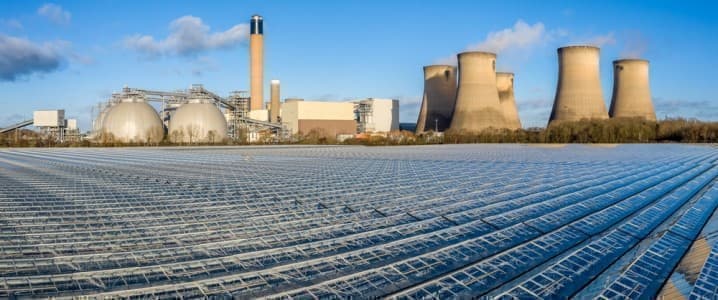As the global aim to move away from fossil fuels comes into full swing, communities that have long relied on coal, oil, and natural gas are becoming increasingly concerned about their job prospects and revenue in the coming years. Unless they can shift away from relying on fossil fuels and attract alternative investments to these regions, they could be left behind with few work opportunities and a poor economy. But in the U.S., President Biden is hopeful that this won’t happen if the right preparations for growth are made. Biden is now planning to bring wealth and green energy to coal communities to ensure they don’t get left in the dark.
The federal government plans to pump hundreds of millions of dollars into coal-rich regions to turn them into green energy hubs thanks to recent legislation. The Department of Energy (DoE) will manage the allocation of $450 million in funds from the Bipartisan Infrastructure Law (BIL), designated for clean energy projects on former coal mine sites. Most of the funds will come from recent climate policies such as the BIL, Chips and Science Act, and the Inflation Reduction Act (IRA).
The IRA introduced a 30 percent tax credit for wind, solar and other green energy projects, as well as an extra 10 percent to boost “energy communities”. The government is providing billions in bonuses to incentivise more clean energy investments in these communities. Much of the funding is expected to support populations, such as those in the coal-heavy Appalachian region, that have been devastated in recent decades due to coal mine closures. The U.S. Deputy Treasury Secretary, Wally Adeyemo, said “Communities like coal communities have the knowledge, infrastructure, resources and know-how to play a leading role in the move to a clean energy economy.”
The U.S. Energy Secretary, Jennifer Granholm, stated of the move, “These projects could focus on a range of technologies from microgrids to advanced nuclear to power plants with carbon capture.” Granholm added, “They’ll prove out the potential to reactivate or repurpose existing infrastructure like transmission lines and substations, and these projects could spur new economic development in these communities.”
Many of these investments will be allocated using results from a study on revitalising coal-power communities through federal investments from an interagency working group. The group identified 25 priority areas from West Virginia to Wyoming in 2021, with almost 18,000 mine sites identified across 1.5 million acres of land. To date, the working group has invested more than $14.1 billion in state funds for coal communities. This financing has also helped to attract $7.4 billion in private funding.
The green energy development will include projects such as solar farms, metals and minerals mining, battery factories, green hydrogen projects and carbon capture and storage operations. The move is expected to support the U.S. goal of cutting greenhouse gas emissions in half by 2030 and achieving net zero by 2050, as well as supporting communities that could be left behind in the transition unless action is taken now.
Some successes have already been seen in the shift from fossil fuels to green alternatives through the transformation of the Massachusetts Brayton Point coal power plant into an offshore wind manufacturing facility. Speaking about the conversion, Granholm explained “It’s very clear that ... the workers who powered the last century of industry and innovation can power the next one.”
Companies investing in coal communities will be expected to hire locally and train workers in the skills needed to run green energy facilities. Energy firms will also be made to pay prevailing wages to ensure that workers are not losing out from the change. The White House emphasised the need to “ensure the creation of good-paying jobs that provide a choice to join a union, remediate mining and drilling lands and plant sites to address environmental degradation, and secure the benefits workers have earned.”
One of the first projects to be launched is the study of ways to extract critical minerals such as lithium, copper, and nickel from coal mine waste streams. The DoE is providing $16 million in funding to West Virginia University and the University of North Dakota to conduct the research, which will support future developments at former coal sites. The U.S. is steadily building its domestic mineral industry, as well as looking regionally for the other high-demand resources needed to support the green transition. Metals and minerals such as copper and lithium are vital components in electric vehicles, as well as solar and wind farms. New climate policies and investments in the mining and manufacturing industries will help the U.S. to shift its reliance away from China for these resources and strengthen its energy security.
As the U.S. undergoes a green transition, encouraging the acceleration of the rollout of renewable energy projects and the movement away from fossil fuels, there is a major concern amongst coal communities that they could be left behind. But recent climate policies and a move by President Biden to establish “energy communities” – prior mining regions that can be transformed into clean energy hubs, could be the answer. Developing green energy projects in these regions could provide vital work opportunities as fossil fuel operations close down, as well as bringing in revenue and maintaining the energy and economic security of the communities.
By Felicity Bradstock for Oilprice.com
More Top Reads From Oilprice.com:
- North Sea Oil Production Could Fall By 80% By 2030
- Harbour Energy Slashes Hundreds Of Jobs, Blames UK Windfall Tax
- Tokyo Scientists Unveil Solid-State Battery Breakthrough


















